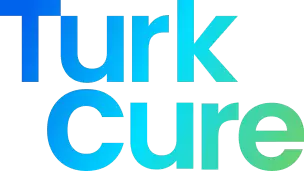Nowadays, people predominantly seek rhinoplasty for cosmetic enhancements, but it can also serve as an effective solution for addressing certain breathing issues. In this article, we explore all about rhinoplasty; and various aspects of this significant and impactful procedure.
We delve into topics such as the relationship between the nose and beauty, the historical evolution of rhinoplasty worldwide, different nose shapes and how nose reshaping can affect the nose tip, various styles of cosmetic nose operation, the ideal candidates for this procedure, post-surgery care and the prevalence of rhinoplasty in Turkey, among other subjects.
Introduction
The nose, being the central focus of the face, has always garnered significant attention, and its role in enhancing one’s appearance is unquestionable. Rhinoplasty (pronounced as RIE-no-plas-tee) is a cosmetic surgery men and women widely seek globally.
It offers a permanent means to reshape the nose and surgeons who perform it use open and closed surgical techniques, as well as non-surgical methods such as Simple Rhinoplasty, to achieve a variety of objectives.
These objectives include reducing the size and length of the nose, addressing a nasal hump or correcting depressions, and refining the nose tip, among others. Ultimately, rhinoplasty aims to attain a desired nose shape that harmoniously complements the other facial features from the front and sides.
Nose & Beauty: The History of Rhinoplasty
Throughout human history, the shape and size of the nose have held significant cultural and aesthetic importance. In various historical epochs, people regarded the shape and form of the nose as a symbol of beauty, uniqueness, and perfection.
Going back to ancient civilizations like Egypt, Greece, and Rome, it becomes clear that people perceived possessing a straight and proportionate nose as a hallmark of beauty and flawlessness.
A glance at the artworks and sculptures from this era reveals depictions of influential individuals and goddesses with well-balanced noses.
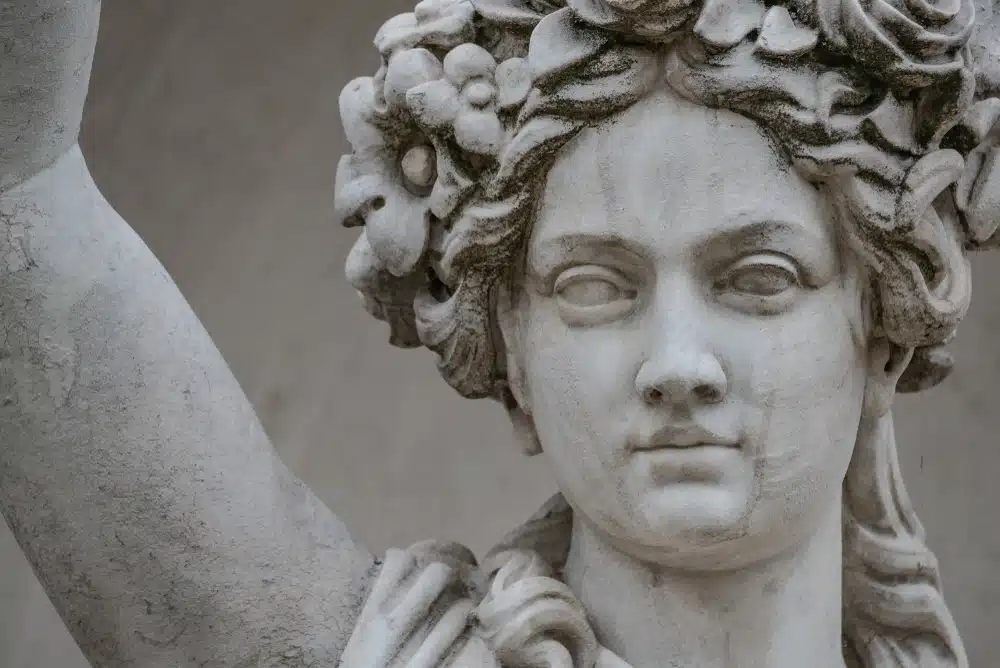
From Indian Civilization to the Renaissance Era
For instance, one of the earliest documented instances of nasal surgery dates back to ancient India around 600 BC. Sushruta, an Indian physician, pioneered surgical techniques aimed at restoring the appearance of noses for individuals who had endured amputation as a form of punishment.
With the onset of the European Middle Ages and the influence of church doctrines that emphasized spirituality, simplicity, and chastity, ideals related to physical beauty and aesthetics were abandoned by individuals. While a historian might be able to find mentions of rhinoplasty in texts from this period, the evidence of the active pursuit of the practice is scant.
The dawn of the Renaissance era, characterized by remarkable works of art including paintings and sculptures by luminaries like Michelangelo, Leonardo da Vinci, and Albrecht Dürer, ushered in an era of humanism and a profound focus on the intricacies of human anatomy and physical beauty.
Italy, during this time, emerged as a significant hub for nasal surgery, with surgeons like Gaspare Tagliacozzi developing innovative techniques for reconstructing noses through skin grafts sourced from the patient’s arm.
Nose Beauty Standards in Recent 400 Years
Again, in the 18th and 19th centuries, in Europe, we saw a return to the beauty standards of ancient Rome and Greece, and nose surgery methods advanced further in the 19th century with the development of anesthesia and a better understanding of surgical hygiene. Surgeons did not only deal with restorative cases but in this era, they would discuss the beauty needs and concerns of people.
In the 20th century, these attentions reached their peak as a result of the rise of Hollywood cinema and the presence of actors. Many men and women considered Hollywood actresses as icons of beauty and charm, and the media focused on different aspects of these people’s lives. The 20th century marked a significant evolution in nose surgery techniques.
The close rhinoplasty technique, which involves surgeons making incisions inside the nose, was introduced during this period. Concurrently, rhinoplasty gained significant popularity for cosmetic purposes.
Fast forward to the 21st century, with the rise of social media, the modeling of beauty ideals has become a ubiquitous trend in society. Increased access to disposable income, coupled with the growth of industries like beauty and health tourism, has led millions of individuals to select various countries, such as Turkey, as their preferred destination for nose surgery.
Summary:
The history of rhinoplasty reflects evolving cultural and aesthetic ideals. Ancient civilizations prized a well-proportioned nose, and early nasal surgeries in ancient India aimed at restoration. The Renaissance sparked innovations in Italy, and the 20th century saw advancements, influenced by Hollywood. The 21st century, driven by social media and beauty tourism, witnessed global popularity in nose surgery, with Turkey as a prominent destination.

The Ideal Candidates for Enhancing Nose Surgery
The most successful outcomes in rhinoplasty are achievable when individuals maintain realistic expectations. If you desire an exceedingly petite and highly stylized nose to the point where its harmony with the rest of your facial features is unclear, it may indicate an unrealistic set of expectations for the surgery’s outcome.
In essence, the primary qualification for this procedure is a noticeable deformity in the appearance of one’s nose. It’s also essential to educate yourself about the general aspects of nose surgery, along with the preoperative and postoperative processes.
Maintaining a clear understanding of the final expected outcome can significantly ease your journey through the entire procedure and enhance your satisfaction with the results.
As an illustration, considering the significance of having knowledge about the procedure and knowing all about rhinoplasty as much as one can, it’s worthwhile to address a common question people often ask: “Is closed rhinoplasty or open technique the superior option?”
In response, it’s vital to recognize that the choice between closed and open rhinoplasty hinges on which part of your nose the surgeon intends to modify.
Are they concentrating on the bridge of your nose, or do they require adjustments to the tip of your nose? Open rhino surgery is better suited for enhancing the shape of the nasal tip, while closed rhinoplasty proves more effective when the surgeon is working on the nasal bridge. The decision ultimately rests on the surgeon’s expertise and the specific objectives of the surgery.
Summary:
Ideal nose surgery candidates possess a noticeable deformity, maintain realistic expectations, and understand the procedure’s aspects. The choice between open and closed rhinoplasty depends on the targeted area—open for the nasal tip and closed for the nasal bridge—dictated by the surgeon’s expertise and goals.
How The Surgeon Performs Your Rhinoplasty?
The process of performing nose job operation involves surgery on the nasal structure, necessitating the manipulation of both cartilage and bone. It’s important to distinguish rhinoplasty from septoplasty, where the surgeon only performs on the cartilage of the septum, which separates the two sides of the nose.
Cosmetic nose surgery is typically more intricate because the surgeon addresses various aspects of the nose, requiring adjustments not only for structural concerns but also to adhere to aesthetic principles.
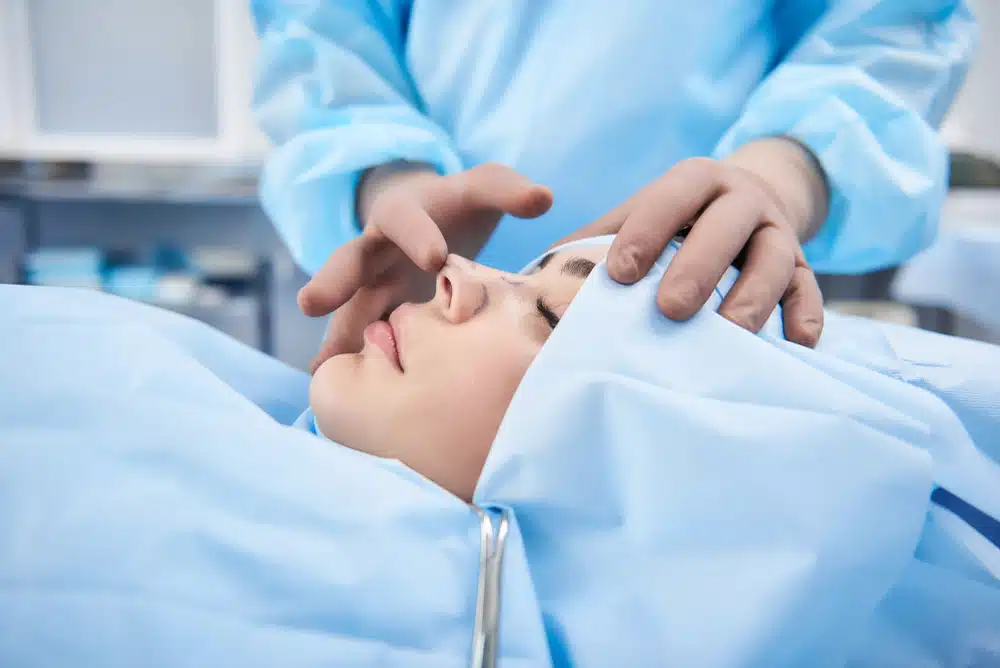
Which Technique Suits You?
After selecting either the closed or open surgery approach on the day of the procedure, a surgeon will do the following steps in a typical rhinoplasty surgery:
- The anesthesia team administrates General Anesthesia to ensure the patient is fully unconscious and pain-free during the surgery. Additionally, they anesthetize your nasal tip to constrict blood vessels, minimizing bleeding.
- Subsequently, your doctor will proceed with the surgery by placing small pledges into the nose. These pledges serve to decongest the nasal passages and create additional openings for the necessary incisions.
- This step exposes the cartilage and bone of your nose that require attention. The surgeon can then proceed with their work, which may involve various procedures such as the removal of extra bone from a hump, reshaping cartilage, or adding small grafts of cartilage to achieve the desired result.
- Once the surgeon has made all the necessary adjustments, he or she will proceed to close and suture the nose.
- The surgeons apply external splints to the outside of the nose, and sometimes he or she uses internal splints as well. These splints aid in maintaining the shape and stability of the nose during the initial stages of the healing process.
Summary:
Rhinoplasty is a surgical procedure that addresses both structural and aesthetic concerns by manipulating cartilage and bone. Administered under general anesthesia, the surgeon uses pledges to decongest nasal passages and make incisions, exposing the nose’s cartilage and bone for necessary adjustments. After completing the procedures, the surgeon closes and sutures the nose, applying splints for stability during healing.
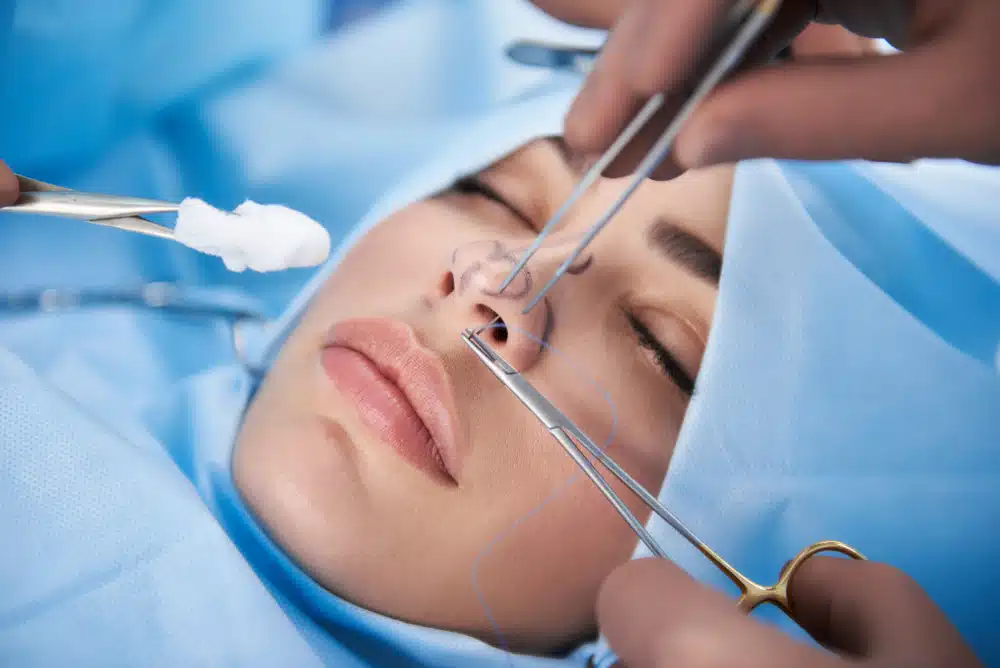
Nose Surgery Techniques
There are two primary techniques for nose surgery: closed rhinoplasty and open rhinoplasty. In the closed technique, surgeons make all incisions inside the nose, whereas the open one involves an additional incision to lift the skin on the nose, revealing the nasal bones. The choice between these methods depends on the individual and is determined by the surgeon’s expertise. Some surgeons exclusively use one method or the other.
Both of these techniques can address both functional issues, such as breathing difficulties, and aesthetic concerns related to the nose. These aesthetic issues may include reducing the size of the nose, correcting its shape, addressing humps or deviations, and enhancing its overall appearance.
Nasal deviation can occur for various reasons. For instance, there are cases where the cartilage at the tip of the nose is inclined in a specific direction due to the nasal bone not being straight. In such cases, the surgeon may need to address the entire nose to achieve correction.
In addition to addressing patients’ aesthetic concerns, there are numerous respiratory issues that the surgeon may need to rectify during the surgery. Some of these problems relate to the inner lining of the nose and are resolved by doctors using methods other than rhinoplasty.
Non-Surgical Cosmetic Nasal Techniques
Non-surgical techniques for cosmetic modification of the nose, often referred to as non-surgical rhinoplasty or liquid rhinoplasty, involve procedures that do not require invasive surgery. Some common non-surgical options include:
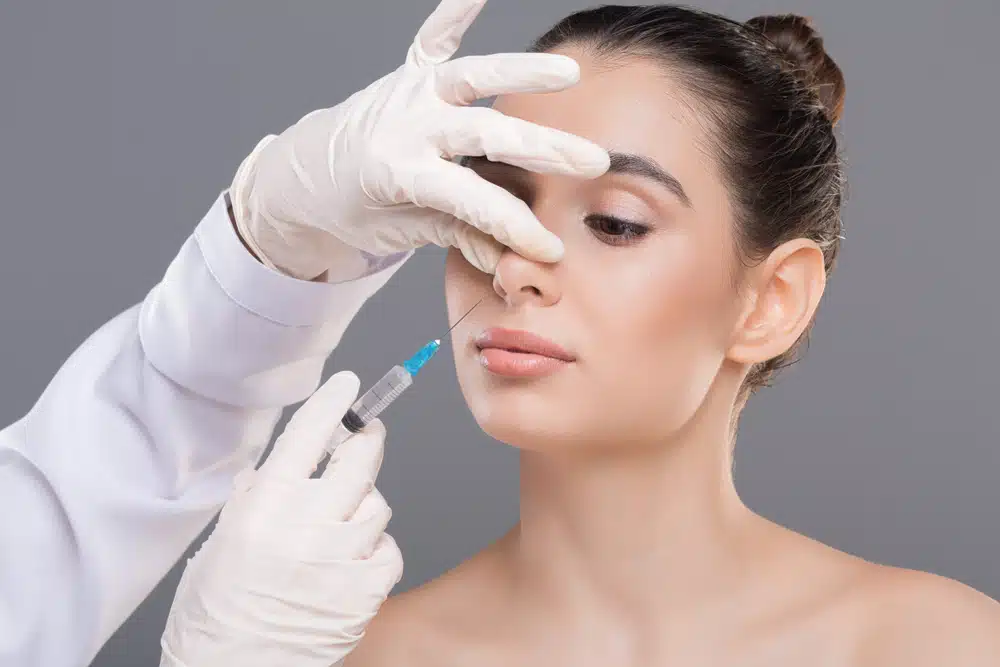
- Dermal Fillers: Surgeons use injectable fillers like hyaluronic acid to add volume to specific areas of the nose. This can help in correcting minor imperfections, such as filling in depressions or straightening the bridge.
- Botox: In some cases, surgeons use Botox to lift the tip of the nose, especially in cases where the nose appears to droop when smiling.
- Thread Lift: This procedure uses dissolvable threads to lift and reshape the nose. This method is good for contouring and lifting the nasal tip.
- PRP (Platelet-Rich Plasma) Therapy: PRP is obtained from your blood, and it can stimulate collagen production and rejuvenate the skin. Sometimes doctors use it to improve the texture and appearance of the nose.
- Laser Therapy: Lasers can be used to treat redness, broken blood vessels, and other skin issues on the nose, enhancing its appearance.
- Nasal Strips: While not permanent, adhesive nasal strips can temporarily lift the tip of the nose, making it appear more refined.
Who Can Benefit from These Techniques?
Non-surgical techniques for cosmetic modification of the nose can benefit individuals who have specific aesthetic concerns or minor imperfections in their nasal appearance. These techniques are suitable for those who have relatively minor issues, such as small bumps, depressions, or irregularities on the nose, and wish to improve its appearance.
Another group who can benefit from these techniques which offer a non-permanent solution is those who want to experiment with the changes in their nose before committing to surgery.
Also since the said procedures typically have minimal downtime and provide immediate or near-immediate results they can be appealing to those seeking a quick transformation.
We all know some people who prefer non-surgical options because they want to avoid the risks, recovery time, and potential complications associated with surgical rhinoplasty. They also seem good candidates who can apply for such treatments. Speaking of side effects there is a group of patients who look for minimal pain and side effects implicit in non-surgical methods.
Individuals with specific nose concerns who have issues like nasal asymmetry, a drooping tip when smiling, or small contour irregularities may find non-surgical options helpful, too.
Lastly, it’s important to remember that non-surgical techniques have their limitations. They are not suitable for individuals with severe nasal deformities, functional breathing problems, or those looking for permanent changes.
Summary:
Non-surgical cosmetic nasal techniques, like dermal fillers, Botox, thread lift, PRP therapy, laser therapy, and nasal strips, offer alternatives to surgery for individuals with minor aesthetic concerns on the nose. Providing quick, non-permanent results with minimal downtime, these techniques are suitable for experimenting with changes before committing to surgery. However, they are not suitable for severe nasal deformities, functional breathing problems, or those seeking permanent changes.

What To Pay Attention to Before Nose Surgery?
What should you consider before undergoing nose surgery? Depending on whether you’re planning to have this procedure in Istanbul, Turkey, you might want to consult the article titled “How to Find the Best Rhinoplasty Doctor in Turkey.” However, we’ll highlight some key points here.
The foremost concern for individuals seeking nose surgery in Turkey is to conduct thorough research and make well-informed decisions. Utilize all available resources to compile a list of surgeons whose surgical approach aligns with your desired outcome.
Factors To Consider When Selecting Your Rhinoplasty Surgeon in Turkey
This includes reviewing their portfolios, seeking insights from friends and family members who’ve had their nose surgeries performed by the same doctor, and engaging in online consultations. By sharing pictures with your chosen doctor, you can help them better understand your nose and your goals.
It’s worth noting that the surgical style of the doctor you select is closely tied to the final shape of your nose that you’re aiming for.
Furthermore, it’s essential to consider that a surgeon may specialize in a particular type of nose, such as a man’s fleshy nose or an ethnic nose, and have developed a unique surgical style for such cases. However, the surgeon’s style encompasses more than just these considerations; it also encompasses the specific techniques they employ.
3D Modeling or Hologram Simulation
Beyond elucidating their surgical approach, a rhinoplasty doctor should also provide a comprehensive overview of the expected post-surgery outcome. This can be achieved through advanced technologies like 3D modeling or hologram simulations, which offer a visual representation of the anticipated results.
Additionally, the surgeon should discuss the surgical procedure itself, its associated costs, and all about rhinoplasty preparations that should be taken into account before the surgery.
- Skin type
- Age (preferably +18 for both women and men)
- Ethnic background
- History of nasal obstruction or breathing problems
- History of previous surgery or trauma
- History of chronic diseases like asthma, diabetes, high blood pressure
Before the scheduled surgery date, your doctor typically furnishes you with a set of guidelines to adhere to. These instructions may encompass abstaining from specific medications and undergoing routine or specialized tests in preparation for the operation.
In most cases, these measures are implemented to mitigate the risk of excessive bleeding on the day of the surgery.
Summary:
Non-surgical cosmetic nasal techniques, like dermal fillers, Botox, thread lift, PRP therapy, laser therapy, and nasal strips, offer alternatives to surgery for individuals with minor aesthetic concerns on the nose. Providing quick, non-permanent results with minimal downtime, these techniques are suitable for experimenting with changes before committing to surgery. However, they are not suitable for severe nasal deformities, functional breathing problems, or those seeking permanent changes.
Other Types of Nose Surgeries: Revision Rhinoplasty & Septoplasty
Additional surgical procedures related to the nose performed either for cosmetic reasons or to address breathing issues encompass revision rhinoplasty (or secondary rhinoplasty) and septoplasty.
Revision rhinoplasty is a surgical procedure performed to correct or improve the results of a previous rhinoplasty (nose job) surgery. It may be necessary when the initial nose reshaping didn’t achieve the desired outcomes or when complications arise.
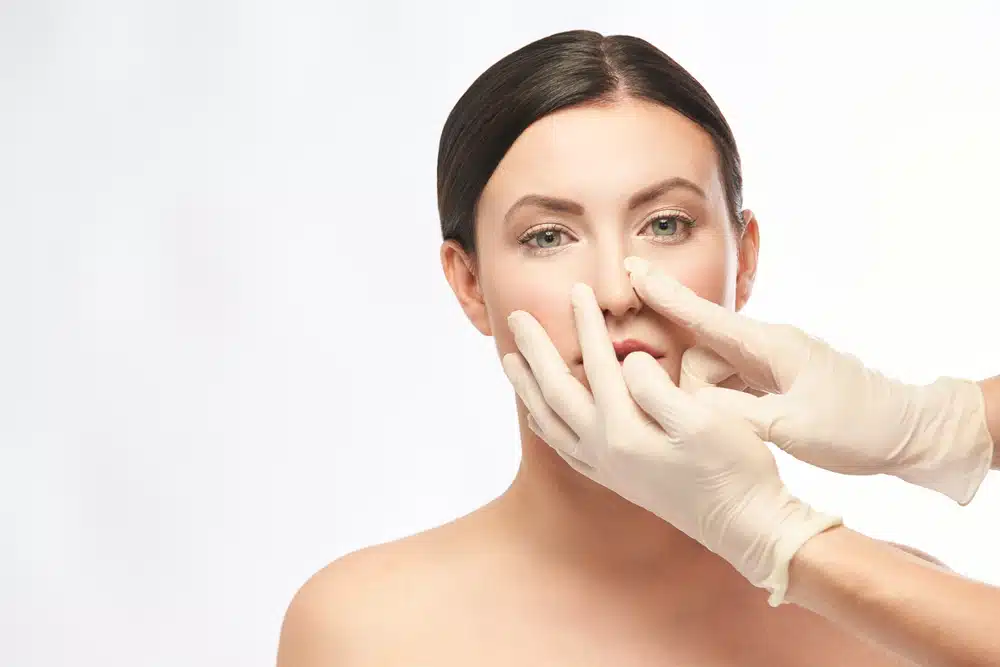
Revision Rhinoplasty Facts
Second nose operation is a complex procedure because the surgeon must work with altered nasal structures and may need to use grafts or other techniques to achieve the desired results. It’s crucial for individuals considering revision nose operations to consult with a highly experienced and skilled surgeon.
There are several reasons why someone might undergo revision rhinoplasty:
- The primary goal of revision nose surgery is to address cosmetic issues that persist after the initial surgery. These concerns might include asymmetry, irregularities, or a shape that doesn’t meet the patient’s expectations.
- Yet, in some cases, the primary nose cosmetic surgery can affect the function of the nose, leading to breathing difficulties. Revision rhinoplasty can correct these functional issues, often in conjunction with a procedure called septoplasty.
- Also, complications from the primary nose job, such as infection, bleeding, or graft displacement, may necessitate corrective surgery.
Septoplasty or Deviated Nose Operation Facts
On the other hand, Septoplasty is a surgical procedure performed to correct a deviated septum, which is the thin wall of cartilage and bone that separates the nasal passages. A deviated septum can be present from birth or result from injury or trauma. It can lead to breathing difficulties, snoring, and chronic sinus issues.
- The main objectives of septoplasty include improved breathing where by straightening the septum, and airflow within the nasal passages it makes it easier for a person to breathe through their nose.
Septoplasty rhinoplasty can also alleviate symptoms associated with a deviated septum, such as congestion, nosebleeds, headaches, and sleep disturbances which leads to enhanced overall comfort and better quality of life due to better breathing and reduced symptoms.
Summary:
- Revision rhinoplasty corrects cosmetic and functional issues from prior nose surgery. It addresses persistent concerns, and complications, and restores proper nasal function.
- Septoplasty corrects a deviated septum, improving breathing and alleviating symptoms. It enhances overall comfort and quality of life-related to nasal issues.
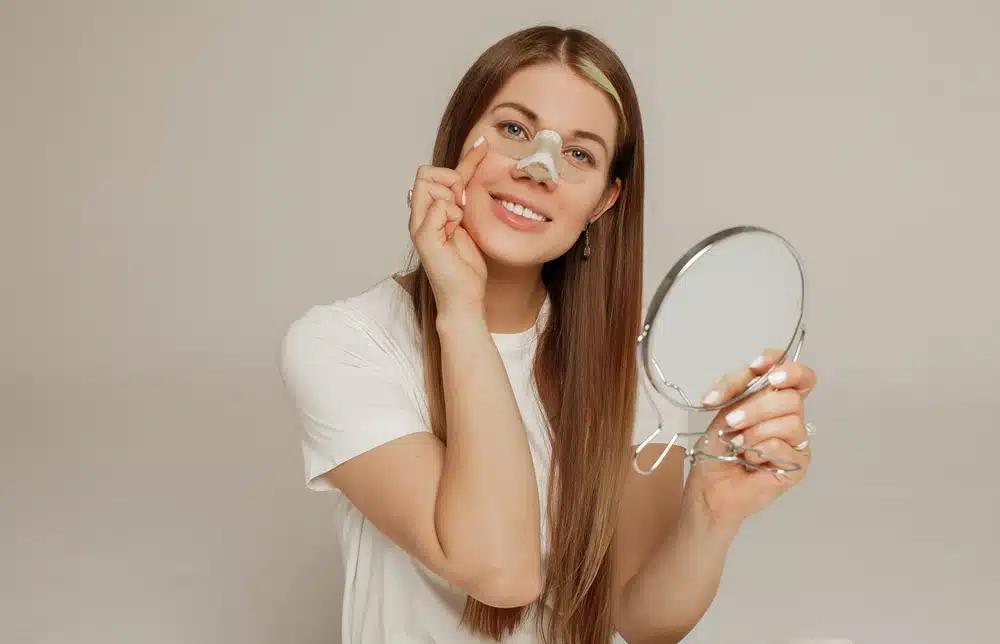
All About Rhinoplasty Postoperative Care
After undergoing rhinoplasty, it’s crucial to provide special care as the nose heals and takes its final shape. Here are some essential care guidelines:
- Swelling and Bruising: It’s common to experience swelling and bruising around the nose, as well as under the eyes and in the surrounding areas. To alleviate these issues, you can use a cold compress.
- Pain and Discomfort: The level of pain and discomfort following rhinoplasty varies from person to person, depending on individual physique and pain tolerance. Typically, pain and swelling subside relatively quickly, usually within three days to a week in most cases. During this period, your doctor may prescribe antibiotics to reduce the risk of infection and provide painkillers to manage any discomfort.
Caring for your nose during the recovery period is essential to ensure a smooth and successful healing process. Be sure to follow your surgeon’s postoperative instructions diligently.
Additional Tips To Take Care of Your Newly Operated Nose
Here are some additional postoperative care guidelines after nose surgery:
- Avoid Crowded Places and Strenuous Activities: Stay away from crowded environments and group activities, such as sports, until your new nose has properly healed. Refrain from engaging in heavy or head-bending activities for at least two weeks.
- Elevate Your Head: Keep your head elevated, even while sleeping. This helps reduce swelling and supports the healing process.
- Don’t Manipulate Splints and Dressings: Wait for your doctor’s guidance regarding when to remove nasal splints and dressings. Avoid handling them until the recommended time.
- Nasal Hygiene: Maintaining nasal hygiene is crucial. Consult your doctor for precise instructions on how to clean your nose and what products to use for this purpose.
- Use Salient Spray: To facilitate easier breathing after nose surgery, consider using a salient spray to moisturize the nasal airway.
LifeStyle Changes During Recovery From Nose Operation
- Avoid Smoking and Alcohol: Steer clear of smoking and alcohol consumption for the duration advised by your doctor to ensure your body’s immune system remains strong.
- Light Diet: Following rhinoplasty, consider adopting a light diet that minimizes chewing and jaw movements for a while.
- Sun Protection: If your nose surgery occurs during the hot season, it’s wise to use sunscreen or wear a wide-brimmed hat to shield your nose from sun exposure.
- Prescription Glasses and Sunglasses: If you wear prescription glasses or sunglasses, consult your surgeon to determine when and how to use them without negatively impacting your healing nose.
Summary:
After rhinoplasty, care is vital for healing. Cold compresses ease swelling and bruising, with pain often subsiding within a week. Adhering to the surgeon’s instructions is crucial.
Additional tips include avoiding crowds and strenuous activities for two weeks, keeping the head elevated, refraining from manipulating splints, maintaining nasal hygiene, using a saline spray, avoiding smoking/alcohol, opting for a light diet, and protecting the nose from sun exposure. These measures support a successful recovery.
What to Anticipate After Rhinoplasty
It’s important to understand that recovery from rhinoplasty is a gradual process, and the final results of cosmetic surgery may not be fully apparent until six months to a year or even up to 16 months in some cases.
It takes several months for swelling to gradually diminish and completely subside. Notably, the tip of the nose tends to take longer to resolve swelling compared to other areas. If you have thicker skin, you can expect the swelling to persist for an extended period.
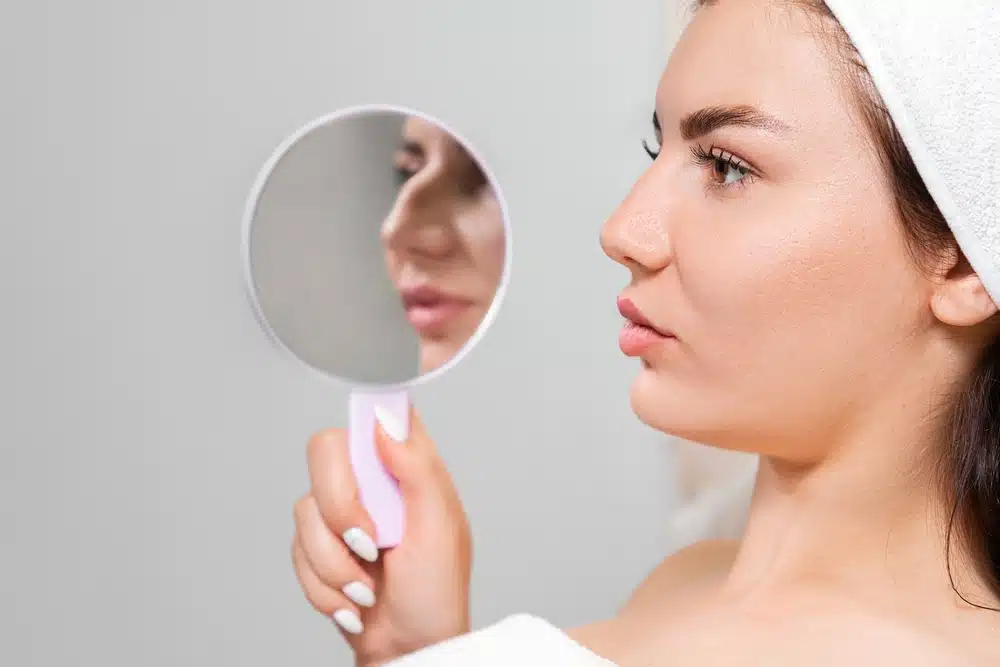
On Expectations, Patience & Probable Dissatisfaction By Results
It’s also essential to manage expectations as the outcome may differ from your initial vision, and you may not be entirely satisfied with the new shape of your nose.
Patience is key in the recovery process, and it’s advisable to maintain open communication with your surgeon to address all about rhinoplasty and any concerns or questions along the way.
Another thing to expect after your nose job is dissatisfaction with the result! According to estimations, there is a likelihood of between 10% and 15% that patients are not satisfied with their rhinoplasty. Based on a 2022 study published in the “Aesthetic Surgery Journal”, which examined 2,326 patients post-surgery, the overall satisfaction rate for the job done on their noses in different individuals is 85% or higher.
However, dissatisfaction with rhinoplasty can stem from various reasons, with the majority being related to the patient’s unrealistic expectations regarding the outcome of the operation or the surgeon’s lack of skill in performing the procedure.
For instance, in the mentioned research, dissatisfied male patients cited reasons such as a residual dorsal hump, an under-rotated tip, and a nose that appeared too small.
Additionally, indicators of subpar nose surgery include:
- The excessive removal of tissue from the septum reflects an unsuccessful attempt to elevate the nose and suggests a poor outcome.
- An excessively upturned nose resembles a pig snout, which can result from inadequate surgical technique.
Understanding and managing expectations, as well as selecting a skilled and qualified surgeon, are crucial factors in achieving a satisfactory outcome with rhinoplasty.
Summary:
Rhinoplasty recovery is gradual, taking six months to a year, with potential dissatisfaction (10-15%) due to unrealistic expectations or surgeon skill. Common concerns include residual dorsal hump and nose size/rotation issues. Choosing a skilled surgeon is key to a satisfactory outcome.
What Are The Risks of Nose Surgery?
Let’s discuss three types of risks associated with rhinoplasty:
- Infection (5% risk): There is a 5% risk of infection occurring after the surgery. Usually, a surgeon would administer an appropriate dose of IV antibiotic to prevent this complication.
- Profuse bleeding (5% risk): Profuse bleeding can occur in 5% of nasal operation cases. This bleeding can manifest during or after the surgery. To manage it, nasal gauze taponage may be used, or a return to the operating room might be necessary.
- Dissatisfaction with Results (15% risk): There is a 15% chance of dissatisfaction with the surgical results, although this risk is lower in the hands of an experienced surgeon. Dissatisfaction can stem from various factors, such as the nose tip remaining the same or an unexpected dorsal hump. If this occurs, corrective surgery can be performed, but the patient must wait for six months before undergoing the second procedure.
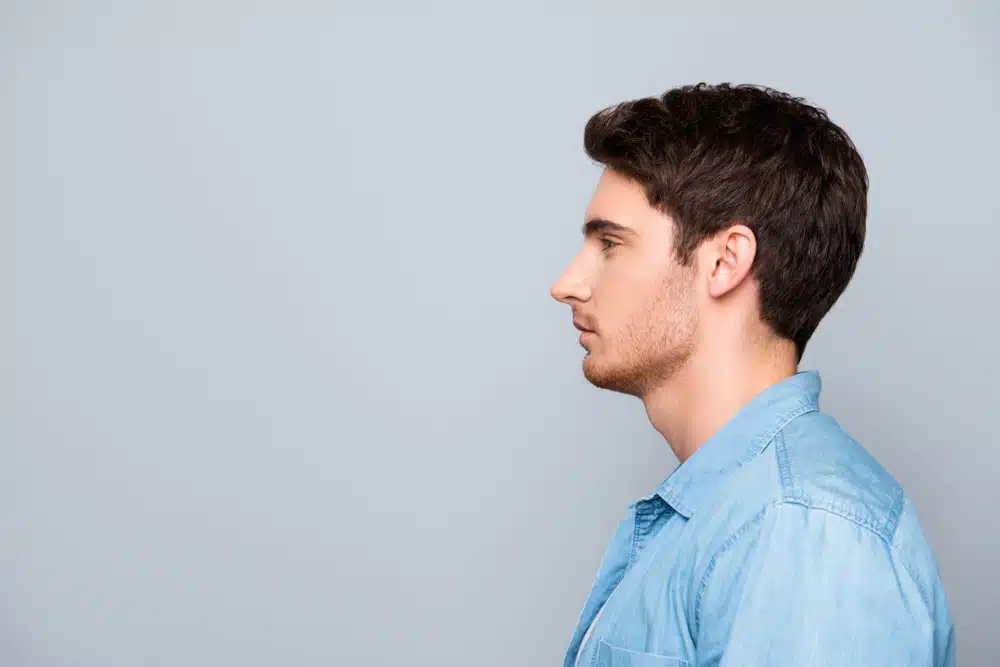
What are the Benefits of Nose Surgery in Turkey?
The advantages of opting for nose surgery in Turkey can be classified into three main categories:
- Affordable Pricing: One of the primary considerations that attract patients to choose Turkey for their beauty treatment journey is cost-effectiveness. In numerous European, American, and Canadian nations, the healthcare systems often demand substantial time and financial resources from patients for procedures like rhinoplasty due to their slower processes and higher costs.
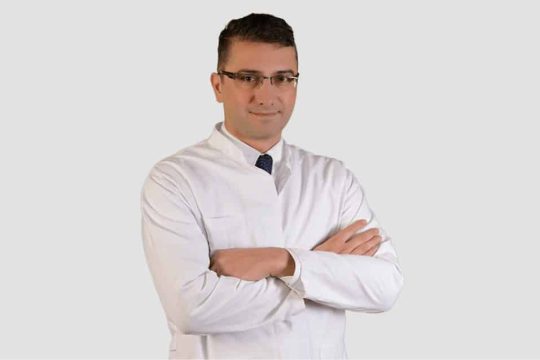
Dr. Abdullah Etoz
- Expert Surgeons: Turkey’s appeal for individuals seeking various surgeries, including rhinoplasty, lies in the presence of highly skilled doctors who are trained in the latest global techniques for such procedures. Thousands of successful cases involving patients of diverse nationalities have positioned Turkey as a leading destination for medical tourism.
- Advanced Technologies: Given that tourism is a significant contributor to Turkey’s foreign exchange income, and health tourism plays a substantial role in this sector, the government has been actively renovating and establishing state-of-the-art, progressive hospitals in major cities such as Istanbul, Ankara, and Antalya.
Moreover, to streamline the entire process of connecting with doctors, initial examinations, and coordinating travel arrangements for patients, companies like TurkCure play a pivotal role. We are responsible for ensuring that patients embark on their medical journey with minimal stress and worry.
Summary:
Nose surgery in Turkey stands out for its affordability, with cost-effective procedures compared to many Western countries. The country hosts highly skilled surgeons proficient in global techniques. Additionally, Turkey’s commitment to health tourism is evident in its modern hospitals equipped with cutting-edge technology. Companies like TurkCure streamline the process, ensuring a stress-free medical journey for patients.
Common Questions All About Rhinoplasty
1. Can the shape, size, and other characteristics of the nose be changed?
In most cases, individuals with overall good physical health can undergo rhinoplasty surgery, which offers a permanent means of altering the nose’s shape. As mentioned in the article, alternative non-surgical methods, like dermal fillers, can also be used to modify the nose’s shape, add volume, and correct humps. Nevertheless, it’s important to note that non-surgical rhinoplasty treatments require periodic repetition.
2. Which nose model is more popular?
As discussed in the text, human noses exhibit a variety of shapes. Presently, a sought-after nose shape for many individuals is one that is petite and harmoniously proportioned to the rest of the face. This may include an upturned and arched tip or a completely flat appearance. However, it’s important to acknowledge that personal preferences significantly influence this choice.
Furthermore, the design of the nose by a surgeon should take into account the individual’s facial bone structure and the positioning of other facial features, ensuring that the resulting nose not only meets aesthetic desires but also functions properly for breathing
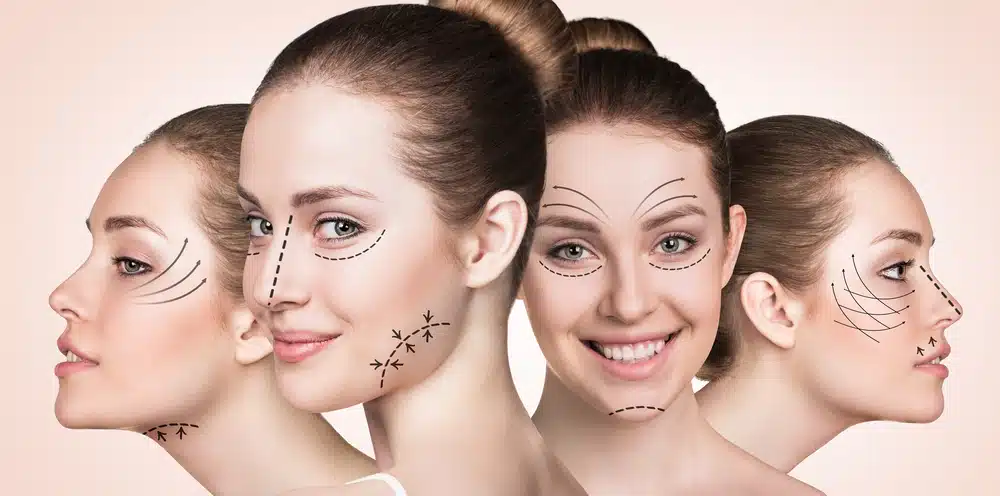
3. Can other surgeries be performed along with rhinoplasty?
You can consider having surgeries that are complementary to rhinoplasty and make your facial features look more in harmony with your new nose. Chin implant is one of these cases and it is suitable for those who, especially from the profile, their nose seems to be stocked out, while a closer examination reveals that the person’s chin is recessed in. Performing a chin implant in this case causes more balance in the person’s profile.
Another complementary surgery is lip lift beside rhinoplasty, which helps restore the central face.
Conclusion
In this article, we talked all about rhinoplasty as a procedure that has evolved significantly throughout history, driven by cultural ideals of beauty and advancements in surgical techniques. Today, a nose job is not only a cosmetic enhancement but also a solution for addressing breathing issues.
The surgical techniques, whether closed or open rhinoplasty, offer a variety of options to address both aesthetic and functional issues. Additionally, non-surgical techniques provide alternatives for minor aesthetic concerns and serve as a temporary solution for those who wish to experiment with changes before committing to surgery.
Before undergoing nose surgery, thorough research and choosing the right surgeon are crucial steps in ensuring a successful outcome. Skin type, age, ethnic background, and medical history are some of the factors to consider. A nose job for beauty purposes carries certain risks, such as infection and dissatisfaction with results, but the expertise of the surgeon significantly impacts the final outcome.
You might also like these:

